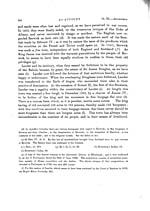Volume 3
(249) Page 237
Download files
Individual page:
Thumbnail gallery: Grid view | List view

237 Lauder is the seat of a presbytery (m) ; and in June, 1640, an act passed for giving to Lauder a yearly fair on the 22nd of July (n). With the four other burghs of Jedburgh, Haddington, Dunbar, and North-Berwick, Lauder sends one representative to the parliament of Great-Britain. After Berwick had ceased to belong to North-Britain in 1482, this shire had no settled county town; and Duns sometimes, and Lauder often, but Green- law never, were used as the shire towns (o). Next to Berwick and Lauder, Duns was probably in this shire the largest town. After the deaths of the great Earl of Moray and his sons, it became the property, if Duns were not already the estate of the Earl of March, who had married the daughter of the one, and the sister of the other; and from the forfeiture of the Earl of Dunbar it was invested in the crown (p). Duns was made a burgh of barony, and at length the shire town in 1661 (q) ; and continued as such till 1696, when that pre-eminence was restored to Greenlaw (r). This town, as we have seen, was still the estate of Lord Home when he died, and was forfeited in October, 1516. Before the year 1596 Greenlaw had become the property of Sir George Home of Spot, whose right was then confirmed by King James's charter, which declared its fitness to be the shire town. This charter was ratified by parliament in November 1600 (s). During the anarchial age that followed at the end of (m) To the tax of the year 1556, amounting on the whole royal burghs to �10,102 8s. 2d., Lauder paid �67 10s., in the same rank with Rothesay, Ruglen, Selkirk, Peebles, Dunbar, Banff, and Kirkaldy, which, with the same inconsiderable means, contributed to the same tax. Of the additional supply, amounting to �72,000 Scots, which was granted by the estates on the 23rd of January, 1667, for a twelve-month, payable monthly, Berwickshire was rated at �2813 1s. Scots, according to the valuation of 1660; and Lauder was assessed at �42, the magistrates choosing a stentmaster. Glendook's Acts. Of the supply granted by the estates on the 10th of July, 1678, amounting to �1,800,000 Scots in five years, Berwickshire was to pay �2813 1s. Scots monthly; and Lauder �36 monthly; and to the monthly cess of 1695, Lauder paid �30. (n) Unprinted Act of that session. (o) Parl. Rec., 301-10; 688-9-10. (p) On the 12th of December, 1494, there was produced to the auditors in Parliament a charter of George Earl of Dunbar, to Hucheon Adamson, of the lands of Little Borthryk, with the pertinents in Duns; and another grant by Patrick Earl of March, of two oxgangs of land, with a croft lying in Duns, providing that Hucheon and his heirs should pay multure to the mill of Duns, of the corns raised on those oxgangs of land. Parl. Rec., 447 ; and there was then depending in Parliament an action of David Lyle of Stonypeth against various free tenants of Duns, for withholding their multure from the mill of Duns, which belonged to the said David, in feu farm, for certain rent owing to the king. Ib., 447. (q) An Act in favour of the town of Duns. Glendook's Acts, 103. (r) An Act, 2 Sess. 2 Parl., ch. ii., concerning the execution of legal process at Lauder and Duns. On the 4th of September, 1672, the Parliament directed that a correction house for Berwickshire should be erected at Duns. 2 Parl., ch. ii., Sess. 3, No. 18. (s) Unprinted Act. No. 26.
Set display mode to:
![]() Universal Viewer |
Universal Viewer | ![]() Mirador |
Large image | Transcription
Mirador |
Large image | Transcription
Images and transcriptions on this page, including medium image downloads, may be used under the Creative Commons Attribution 4.0 International Licence unless otherwise stated. ![]()
| Caledonia, or, An account, historical and topographic of North Britain from the most ancient to the present times > Volume 3 > (249) Page 237 |
|---|
| Permanent URL | https://digital.nls.uk/74528572 |
|---|---|
| Description | Vol. III. |
|---|---|
| Attribution and copyright: |
|

